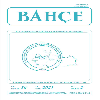Myrtus communis L. TÜRÜNÜN FARKLI KULLANIM ALANLARI AÇISINDAN DEĞERLENDİRİLMESİ
EVALUATION OF DIFFERENT USES OF Myrtus communis L.
___
- 1. Aleksic, V. and P. Knezevic, 2014. Antimicrobial and Antioxidative Activity of Extracts and Essential Oils of Myrtus communis L. Microbiological Research, 169:240–254.
- 2. Alsudany, A. A. and F. S. Alzubaidi, 2015. Bioremoval of Chromium (Cr+3) Using Leaves of Myrtus communis. World Journal of Experimental Biosciences, 3:80–83.
- 3. Arany, A. M., M. Khosravi, H. R. Azimzadeh, H. Sovdaeizadeh and H. Sapahvand, 2014. An Investigation on Cd Accumulation Potential in Myrtus communis and Pinus brutia. Journal of Environmental Studies, 40(1):4–6.
- 4. Baytop, T., 1999. Türkiye’de Bitkiler ile Tedavi Geçmişte ve Bugün. Nobel Tıp Yayınevi, İstanbul.
- 5. Bradesi, P., F. Tomi, J. Casanova, J. Costa and A. F. Bernardini, 1997. Chemical Composition of Myrtle Leaf Essential Oil from Corsica (France). Journal of Essential Oil Research, 9(3):283–288.
- 6. Clark, A. M., 1996. Natural Products as a Resource for New Drugs. Pharma. Res. 13:1133–1144.
- 7. Davis, P. H., 1972. Flora of Turkey and the East Aegean Islands Volume Four.
- 8. Doğan, Y., S. Başlar, H. H. Mert and G. Ay, 2003. Plants Used As Natural Dye Sources In Turkey. Economic Botany, 57:442–453.
- 9. Dülger, B. and A. Gönüz, 2004. Antimicrobial Activity of Certain Plant Used in Turkish Traditional Medicine. Asian Journal of Plant Sciences, 3(1):104–107.
- 10.Gortzi, O., S. Lalas, I. Chinou and J. Tsaknis, 2008. Reevaluation of Bioactivity and Antioxidant Activity of Myrtus communis Extract before and after Encapsulation in Liposomes. European Food Research and Technology, 226:583–590.
- 11.Guarrera, P. M., G. Salerno and G. Caneva 2006. Food, Flavoring and Feed Plant Traditions in the Tyrrhenian Sector of Basilicata, Italy. J. of Ethnobiology and Ethnomedicine, 2:37.
- 12.Mahmoud, I. N., A. A. El–Sayed, F. A. Rania, A. Ezzel–Din, M. I. El–Khrisy Khaled and A. S. Amany, 2010. Secondary Metabolites and Bioactivities of Myrtus communis. Pharmacognosy Research, 2(6):325–333.
- 13.Mamıkoğlu, N. G., 2010. Türkiye’nin Ağaç ve Çalıları. NTV Yayınları, İstanbul, 727 S.
- 14.Messaoud, C., A. Laabidi and M. Boussaid, 2012. Myrtus communis L. Infusions: The Effect of Infusion Time on Phytochemical Composition, Antioxidant and Antimicrobial Activities. Journal of Food Science, 77(9): 941–947.
- 15.Montoro, P., C. I. G. Tuberoso, S. Piacente, A. Perrone, V. De Feo, P. Cabras and C. Pizza, 2006. Stability and Antioxidant Activity of Polyphenols in Extracts of Myrtus communis L. Berries Used for the Preparation of Myrtle Liqueur. Journal of Pharmaceutical and Biomedical Analysis, 41:1614–1619.
- 16.Moreno–Jimenez, E., J. M. Penalosa, R. O. Carpena–Ruiz and E. Esteban, 2008. Comparison of Arsenic Resistance in Mediterranean Woody Shrubs Used in Restoration Activities. Chemosphere, 71: 466–473.
- 17.Moreno–Jimenez, E., S. Vazquez, R. O. Carpena–Ruiz, E. Esteban and J. M. Penalosa, 2011. Using Mediterranean Shrubs for the Phytoremediation of a Soil Impacted by Pyritic Wastes in Southern Spain: A Field Experiment. J of Env. Management, 92:1584– 1590.
- 18.Moreno–Jimenez, E., E. Esteban, R. O. Carpena–Ruiz, M. C. Lobo and J. M. Penalosaa, 2012. Phytostabilisation With Mediterranean Shrubs and Liming Improved Soil Quality in a Pot Experiment With a Pyrite Mine Soil. Journal of Hazardous Materials, 201–202: 52–59.
- 19.Özkan, A. M. G. and Ç. G. Güray, 2009. A Mediterranean: Myrtus communis L. (Myrtle). Plants and Culture: Seed of the Cultural Heritage of Europe. s.158–168.
- 20.Rhizopoulou, S., 2004. Plant Culture: Symbolic Plant(s) of the Olympic Games. Journal of Experimental Botany, 55(403):1601–1606.
- 21.Salvagnini, L. E., J. R. S. Oliveira, L. E. Santos, R. R. D. Moreira and R. C. L. R. Pietro, 2008. Evaluation of the Antibacterial Activity of Myrtus communis L. (Myrtaceae) Leaves. Revista Brasileira Pharmacognosia, 18(2):241–244.
- 22.Scherrer, A. M., R. Motti and C. S. Weckerle, 2005. Traditional Plant Use in the Areas of Monte Vesole and Ascea, Cilento National Park (Campania, Southern Italy). Journal of Ethnopharmacology, 97:129–143.
- 23.Silva, N. N. C. and J. A. Fernandes, 2010. Biological Properties of Medicinal Plants: A Review of Their Antimicrobial Activity. The Journal of Venomous Animals and Toxins Including Tropical Diseases, 16(3):402–413.
- 24.Sumbul, S., M. A. Ahmad, M. Asif and M. Akhtar, 2011. Myrtus communis Linn. A Review. Indian Journal of Natural Products and Resources, 2(4):395–402.
- 25.Tunçer, P., 2012. Mersin Bitkisinin (Myrtus communis L.) Broiler Rasyonlarında Kullanım İmkanlarının Araştırılması (Doktora Tezi). Afyon Kocatepe Üniversitesi Sağlık Bilimleri Enstitüsü, Hayvan Besleme ve Beslenme Hastalıkları ABD, Afyonkarahisar, 88s.
- 26.Yıldırım, H., 2012. Adana ve Mersin Ekolojik Koşullarında Yetişen Mersin Bitkisi (Myrtus communis L.)’nde Bazı Bitkisel ve Pomolojik Özellikler ile Yaprak Uçucu Yağ Bileşenlerinin Belirlenmesi (Yüksek Lisans Tezi). Çukurova Üniversitesi Fen Bilimleri Enstitüsü Bahçe Bitkileri ABD, Adana, 110 s.
- 27.Yıldız, B. ve E. Aktoklu, 2010. Bitki Sistematiği İlkin Karasal Bitkilerden Bir Çeneklilere. Palme Yayıncılık.
- 28.Yücel, E., 2005. Ağaçlar ve Çalılar I. Birinci Baskı, 301 s.
- ISSN: 1300-8943
- Yayın Aralığı: Yılda 2 Sayı
- Başlangıç: 1968
- Yayıncı: Atatürk Bahçe Kültürleri Merkez Araştırma Enstitüsü
ÜZÜMSÜ MEYVELERİN KAHRAMANMARAŞ’TA DONDURMA SANAYİSİ AÇISINDAN ÖNEMİ
Serkan ARAS, Nesibe Ebru KAFKAS, Muhammet Ali GÜNDEŞLİ
KAYSERİ İLİ TOMARZA İLÇESİNDE KISA GÜN VE GÜN– NÖTR ÇİLEK ÇEŞİTLERİNİN YETİŞTİRİCİLİĞİ
Kadir Uğurtan YILMAZ, Funda KILIÇ
KUŞBURNU MEYVESİNİN DEĞİŞİK ÜRÜNLERE İŞLENİRKEN BESİNSEL KALİTESİNDEKİ DEĞİŞİM
Zühal OKCU, Sevgi KERSE, Yasemin YAVUZ²
Mehmet Ali SARIDAŞ, Eser ÇELİKTOPUZ, Burçak KAPUR, Bülent ÖZEKİCİ, Sevgi KARGI PAYDAŞ
BAZI ÜZÜMSÜ MEYVELERDE TOPLAM FENOL VE ANTİOKSİDAN AKTİVİTE İÇERİKLERİNİN BELİRLENMESİ
Ayşegül BURGUT², Hatice ÖZCAN², Özgecan TÜREMİŞ³, Begüm OLUT, Nurgül F TÜREMİŞ, Ebru KAFKAS
FRENK ÜZÜMÜ ÇELİKLERİNİN KÖKLENMESİ ÜZERİNE ÇELİK ALMA ZAMANLARININ ETKİSİ
Mehmet POLAT, Volkan OKATAN, Ünzile VAROL
Nafiye ADAK, Kamile ULUKAPI, Ayşegül NASIRCILAR
